Bee stings are a common outdoor hazard that can cause pain and discomfort. When a bee stings, it injects venom into the skin, triggering a range of reactions. Most people experience mild symptoms like pain, redness, and swelling at the sting site, which usually subside within a few hours to days.
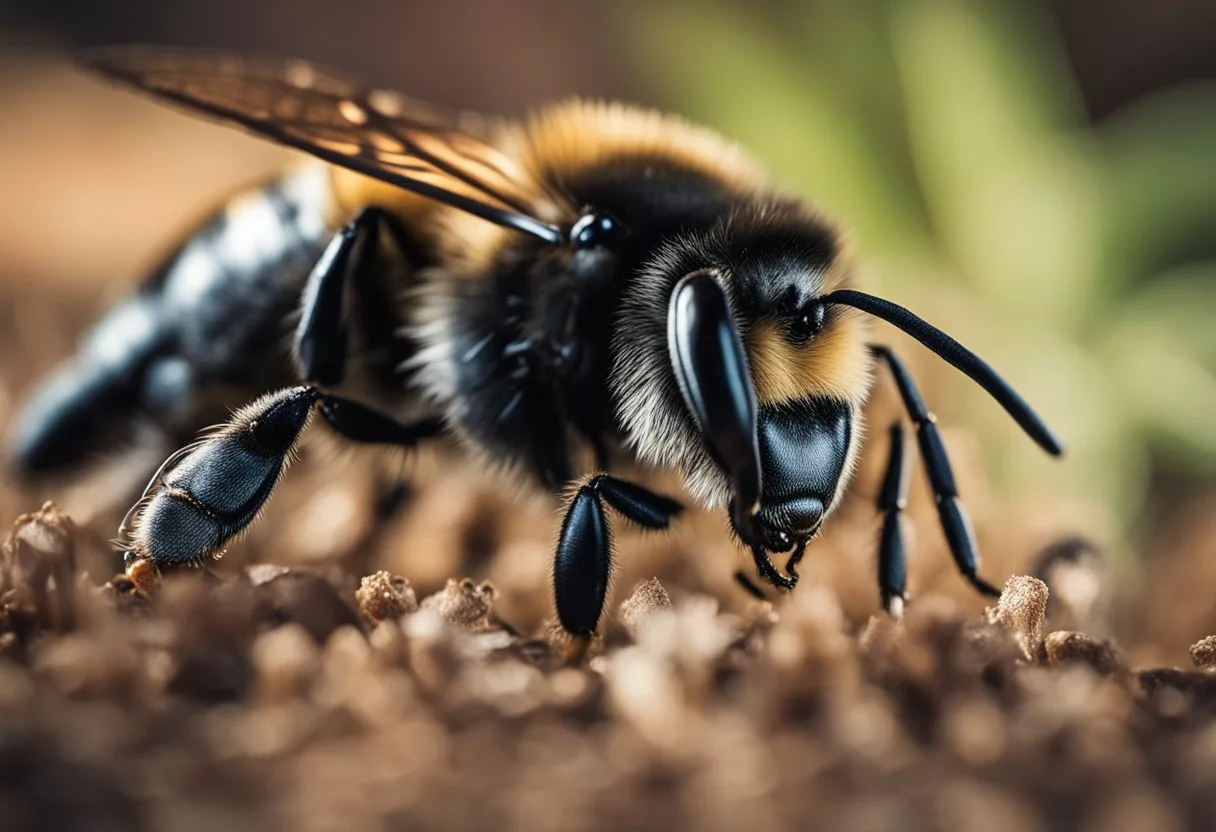
For some individuals, bee stings can lead to more serious reactions. About 5% of people are allergic to bee venom[1], which can cause severe symptoms or even life-threatening anaphylaxis. Knowing how to respond to a bee sting and recognizing the signs of a serious reaction are crucial skills for anyone who spends time outdoors.
Quick action after a bee sting can help reduce pain and prevent complications. Removing the stinger promptly, cleaning the area, and applying ice can minimize discomfort. For those with known bee allergies, carrying an epinephrine auto-injector is essential for emergency treatment.
Key Takeaways
- Bee stings typically cause mild, localized reactions that resolve on their own.
- Prompt removal of the stinger and basic first aid can help reduce pain and swelling.
- Severe allergic reactions to bee stings require immediate medical attention.
Understanding Bee Stings
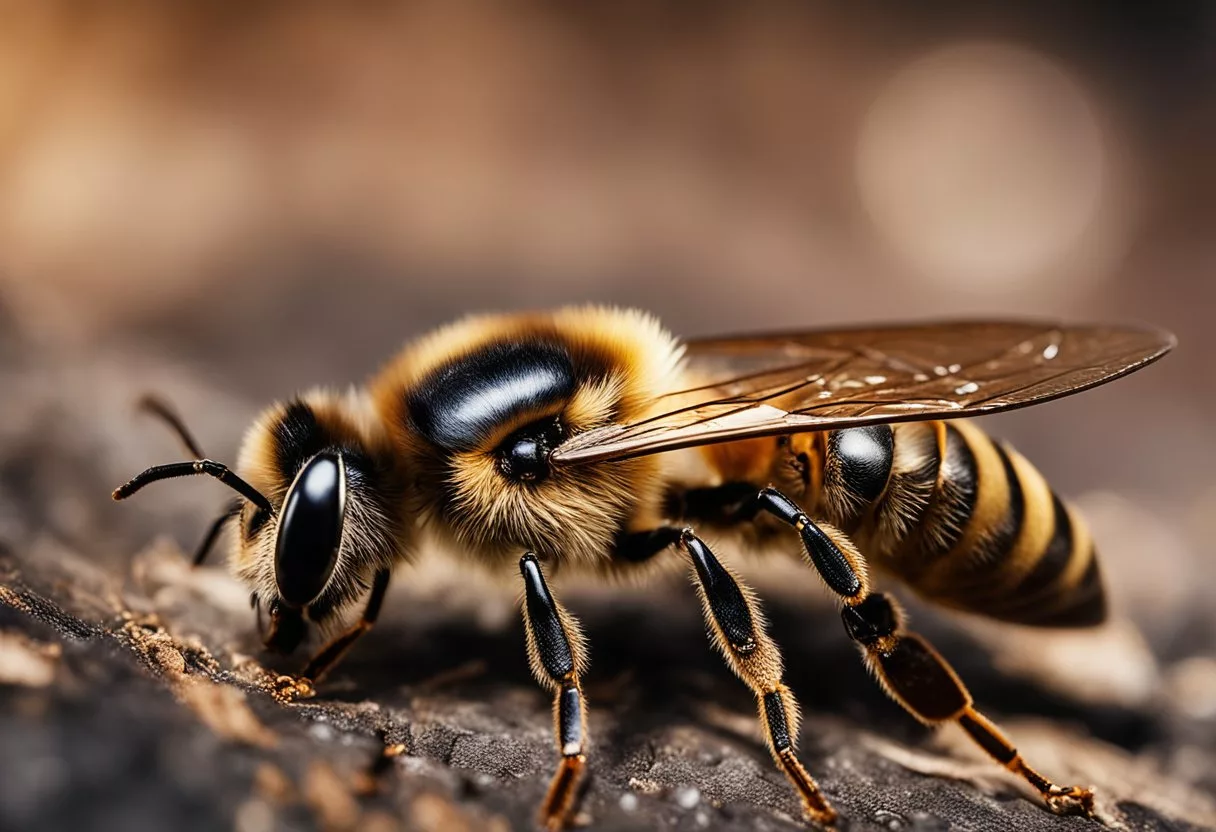
Bee stings involve a complex interaction between the bee’s anatomy and human physiology. Different types of bees have varying sting mechanisms and venom compositions.
Anatomy of a Bee Sting
A bee’s stinger is a modified egg-laying organ found only in female bees. It consists of three main parts: the stylus and two barbed lancets. The stylus acts as a guide for the lancets, which move back and forth to push the stinger deeper into the skin.
The venom sac is connected to the stinger. When a bee stings, it pumps venom through the stinger into the victim. This venom contains various compounds, including:
- Enzymes
- Peptides
- Pheromones
Honeybees have barbed stingers that get stuck in human skin. When the bee flies away, it leaves behind its stinger, venom sac, and part of its abdomen. This process is fatal for the bee.
Types of Bees and Stings
Different bee species have distinct stinging behaviors and venom compositions:
- Honeybees: Leave their stinger behind[1] after stinging. Their venom causes immediate pain and swelling.
- Bumblebees: Can sting multiple times but rarely do so unless threatened. Their stings are generally less painful than honeybees.
- Carpenter bees: Males lack stingers, while females can sting but rarely do.
Other stinging insects often mistaken for bees include:
- Wasps
- Yellow jackets
- Hornets
These insects can sting multiple times and are often more aggressive than bees. Their venom compositions differ, leading to varied reactions in humans.
Male bees of all species lack stingers. Only female bees have the ability to sting, as the stinger is a modified ovipositor.
Immediate Response to a Bee Sting
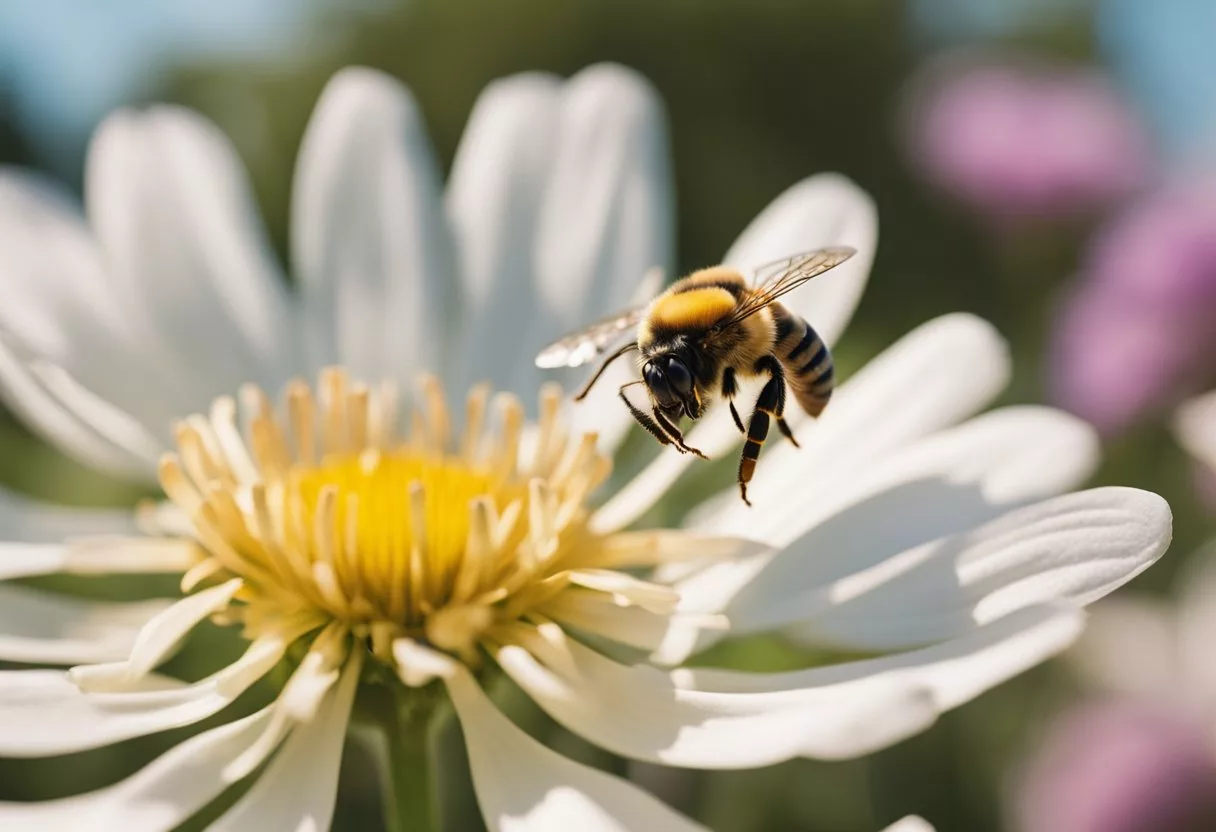
When a bee stings, quick action is crucial. Knowing the symptoms and proper first aid can help manage pain and prevent complications.
Symptoms of a Bee Sting
A bee sting causes pain, redness, and swelling at the site. The area may feel hot and itchy. Some people might develop hives or a larger swollen area.
Most reactions are mild and can be treated at home. However, severe allergic reactions can occur in some cases.
Signs of a severe reaction include:
- Difficulty breathing
- Dizziness
- Nausea
- Swelling of the throat or tongue
These symptoms need immediate medical attention.
First Aid Treatment
The first step is to remove the stinger quickly[2]. Scrape it out with a straight-edged object like a credit card. Don’t use tweezers, as they may squeeze the venom sac.
Clean the area with soap and water. Apply a cold compress or ice pack to reduce swelling and ease pain.
For itching and swelling, try these methods:
- Take an oral antihistamine
- Apply a hydrocortisone cream
- Use calamine lotion
For pain relief, over-the-counter pain medications can help. People with known bee allergies should carry an epinephrine auto-injector and use it if needed.
Allergic Reactions to Bee Stings
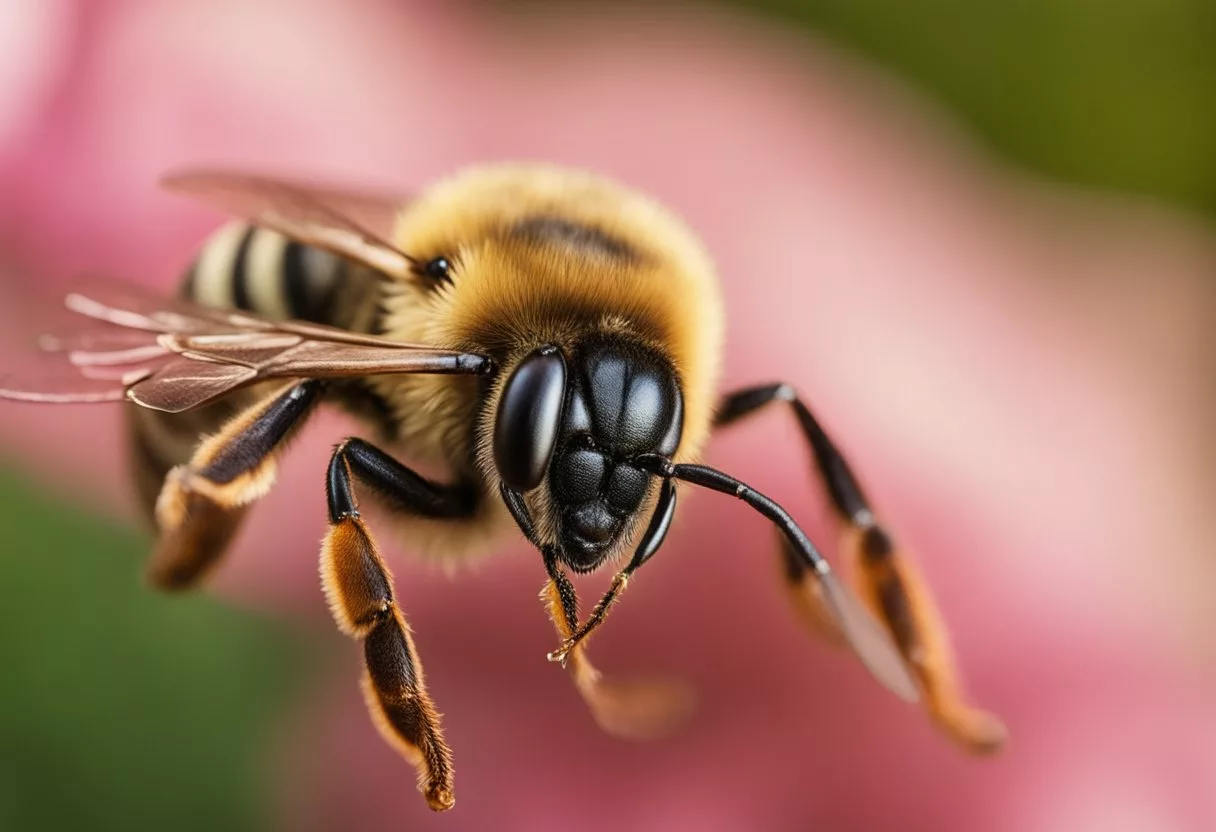
Bee stings can cause serious allergic reactions in some people. These reactions range from mild to life-threatening and require prompt attention.
Signs of Allergic Reactions
Allergic reactions to bee stings occur when the immune system overreacts to the venom. Mild symptoms include:
- Hives or itching beyond the sting site
- Swelling in areas away from the sting
More severe reactions may involve:
- Difficulty breathing
- Swelling of the throat and tongue
- Dizziness or fainting
- Stomach cramps and nausea
Anaphylaxis is the most dangerous reaction. It can cause a sharp drop in blood pressure and loss of consciousness. This is a medical emergency that needs immediate treatment.
Managing Severe Allergic Reactions
For severe allergic reactions, quick action is crucial. Epinephrine is the primary treatment[3] for anaphylaxis. People with known bee allergies often carry an epinephrine auto-injector (EpiPen).
Steps for managing a severe reaction:
- Use the epinephrine auto-injector immediately
- Call emergency services
- Take antihistamines if available
- Remove the stinger if still present
- Stay calm and lie flat with legs elevated
After emergency treatment, follow-up care is important. An allergist may recommend immunotherapy to reduce the risk of future reactions.
Long-Term Management
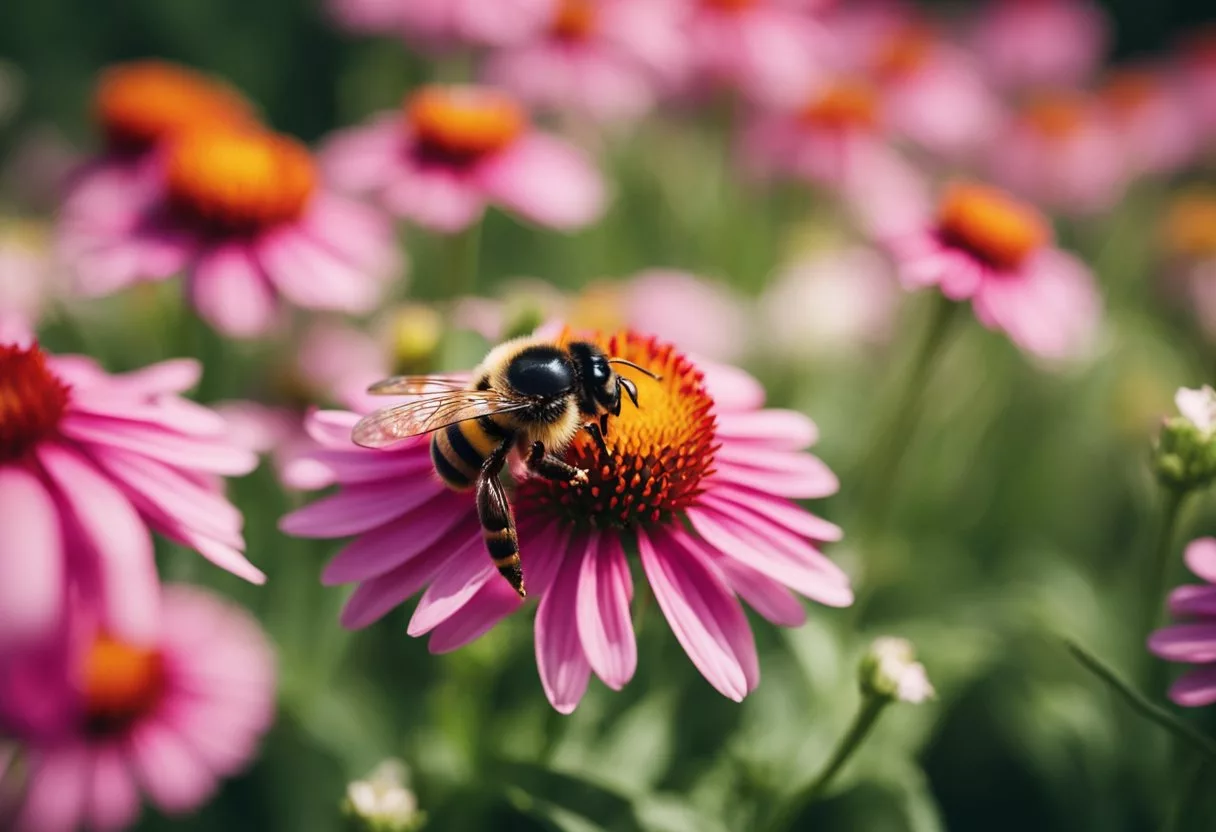
Managing bee sting risks involves prevention and follow-up care. These steps help reduce future stings and watch for delayed reactions.
Preventing Bee Stings
Wear light-colored clothes when outdoors. Bees are less likely to mistake you for a flower. Avoid strong perfumes or scented products that may attract bees.
Keep food covered when eating outside. Sweet foods and drinks can draw bees. Be careful when drinking from cans or bottles outdoors.
Stay calm if a bee flies near you. Don’t swat at it or run away. This can make the bee feel threatened and more likely to sting.
Remove bee nests near your home safely. Call a professional if needed. Trim bushes and trees to spot nests early.
Follow-Up Care and Monitoring
Watch for signs of delayed allergic reactions[1] after a sting. These can occur hours or days later. Symptoms may include hives, fever, or joint pain.
See an allergist if you’ve had a severe reaction. They might suggest allergy testing or immunotherapy. This can reduce your risk of future severe reactions.
Keep an epinephrine auto-injector with you if prescribed. Replace it before it expires. Learn how to use it properly.
Tell your doctor about any bee stings at check-ups. This helps track your health and allergy status over time.
Common Questions and Concerns
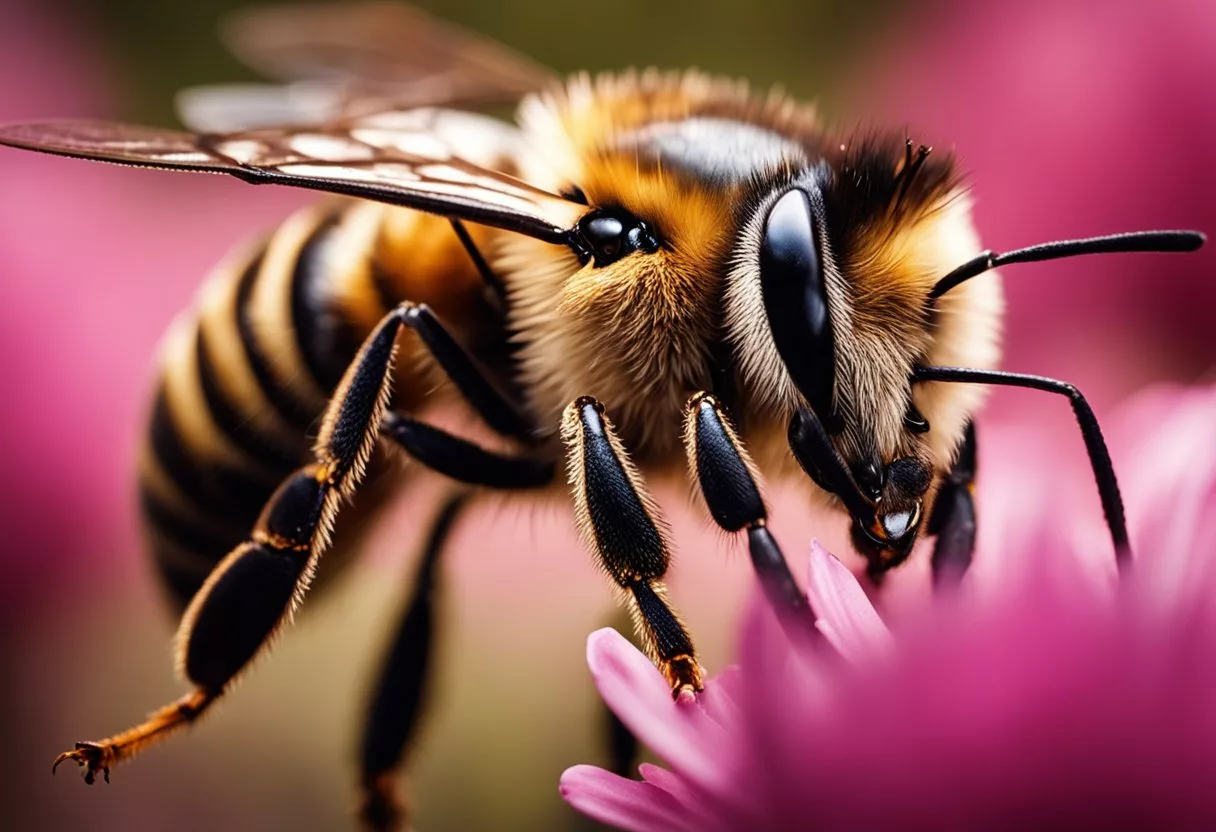
Bee stings can be scary and confusing. People often worry about when to get help and what’s true about bee stings. Let’s clear up some common concerns.
When to Seek Help
Most bee stings are not serious. But some people need medical care. Call 911 if you have:
• Trouble breathing • Swelling of the throat or tongue • Feeling dizzy or faint • Severe hives all over your body
These could mean a severe allergic reaction.
Go to the doctor if:
• The sting site stays swollen after a few days • You have signs of infection like fever or pus • You got many stings at once
Children and older adults[4] may need extra care. Watch them closely after a sting.
Bee Sting Myths and Facts
Myth: All bee stings need a doctor’s care. Fact: Most stings can be treated at home[5].
Myth: Bee stingers keep pumping venom. Fact: The stinger releases venom for only a few seconds.
Myth: Ice is the best treatment. Fact: Both ice and heat can help with pain.
Myth: Removing the stinger any way is fine. Fact: Scrape it off. Don’t squeeze, as this can release more venom.
Myth: Bee stings always cause severe reactions. Fact: Most people only have mild pain and swelling.
Additional Considerations
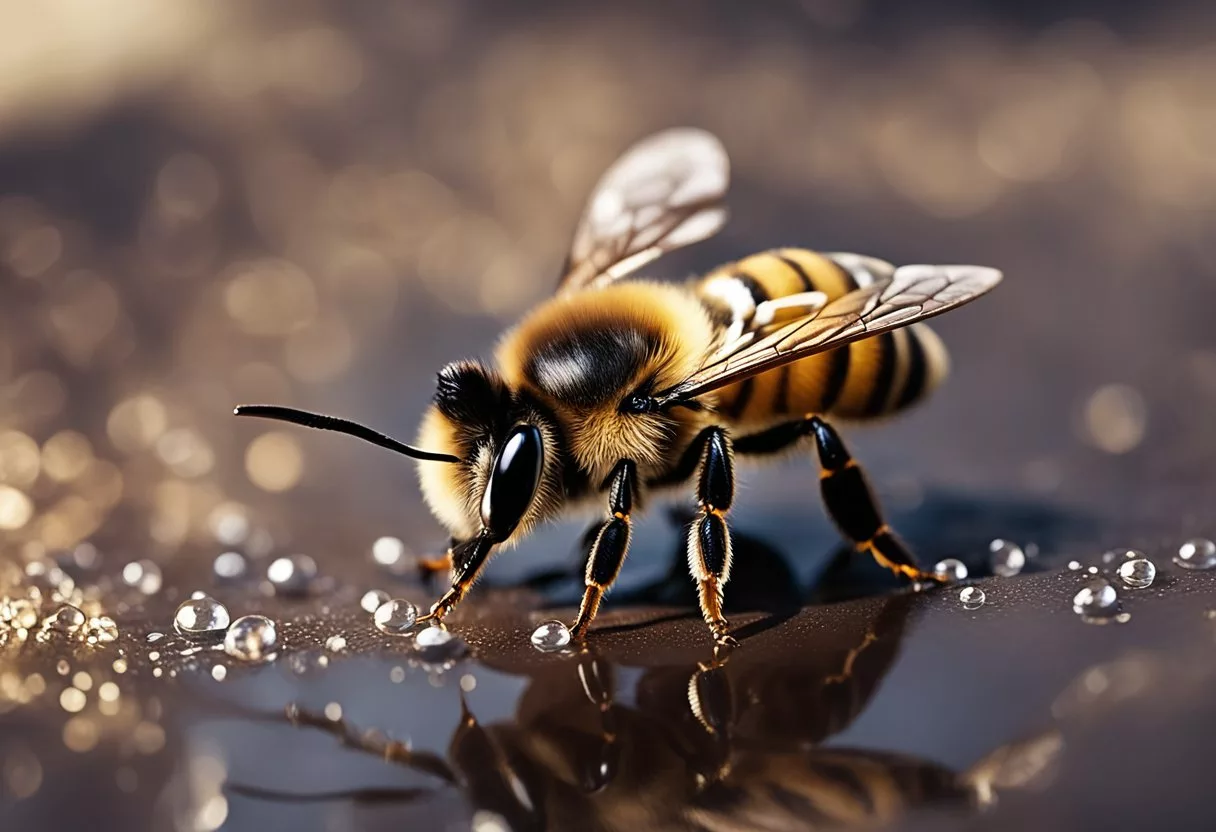
Certain groups face higher risks from bee stings. The environment and a person’s behavior also play key roles in sting incidents.
Special Populations
Children and older adults[6] may have stronger reactions to bee stings. Kids often get stung while playing outside. Their smaller body size can make venom effects more intense.
Older people may have weaker immune systems, leading to more severe reactions. Those with heart problems or taking certain medicines need extra caution.
People with bee allergies face the highest risk. Even one sting can cause a life-threatening reaction called anaphylaxis.
Environment and Behavior
Where you live and work affects sting risk. Areas with lots of flowers attract more bees. Farms, gardens, and parks increase chances of encounters.
Bee behavior impacts sting likelihood. Honeybees only sting to defend their hive. Bumble bees rarely sting unless threatened.
Swatting at bees raises sting risk. Staying calm and slowly moving away is safer. Wearing bright colors or strong scents can draw bees.
Multiple stings are more dangerous than single stings. They inject more venom and raise the risk of severe reactions.
Home and Natural Remedies
When a bee stings, there are many home treatments to ease pain and swelling. These remedies use common household items and natural approaches to provide relief.
Using Household Items for Treatment
Cold compresses can reduce swelling and numb the area. Apply ice wrapped in a cloth for 10-15 minutes at a time. Baking soda paste helps neutralize bee venom. Mix baking soda with water and spread on the sting site.
Calamine lotion[7] can soothe itching and burning. Dab it on the affected area. Hydrocortisone cream fights inflammation and itching. Apply a thin layer to the sting.
Over-the-counter antihistamines like Benadryl reduce itching and swelling. Follow the dosage instructions on the package.
Alternative Treatments
Some people find relief with natural remedies. Honey may help due to its antibacterial properties. Apply a small amount to the sting site. Apple cider vinegar could neutralize the venom. Dab it on with a cotton ball.
Aloe vera gel cools and soothes the skin. Apply fresh gel from an aloe plant or use store-bought aloe vera. Lavender essential oil may reduce pain and swelling. Mix a few drops with a carrier oil before applying.
Plantain leaves, when crushed and applied, might draw out the venom. This is a traditional remedy used in some cultures.
Frequently Asked Questions
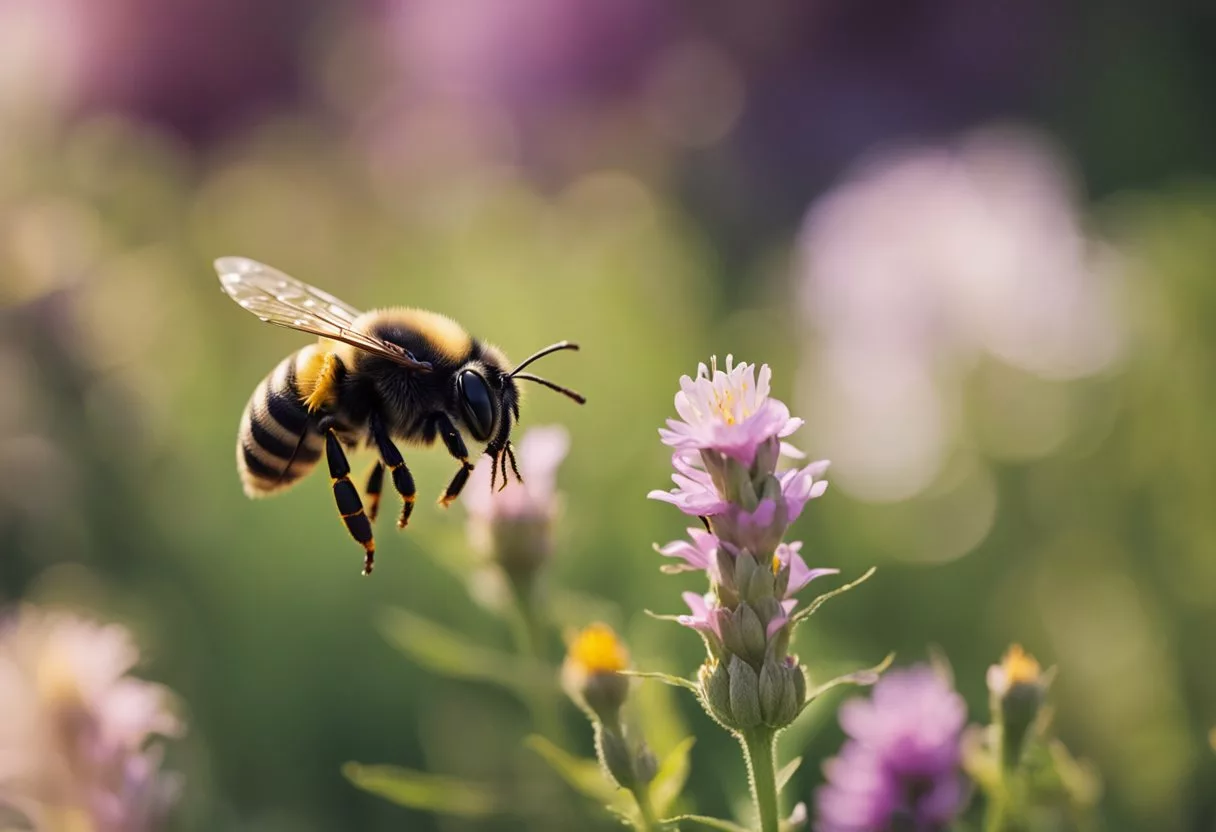
Bee stings can cause various reactions and concerns. Here are some common questions people have about dealing with bee stings and when to seek medical help.
How can you treat a bee sting at home?
Remove the stinger quickly by scraping it off with a straight-edged object. Wash the area with soap and water. Apply a cold compress to reduce swelling and pain.
Take an over-the-counter pain reliever if needed. Apply a paste of baking soda and water[6] to help neutralize the venom and ease discomfort.
What are the signs of an allergic reaction to a bee sting?
Mild allergic reactions may include widespread hives and itching. More severe signs include difficulty breathing, dizziness, and swelling of the throat or tongue.
Nausea, abdominal pain, and a rapid pulse can also indicate a serious allergic reaction. If these symptoms occur, seek immediate medical attention.
How long does the swelling from a bee sting typically last?
Normal swelling from a bee sting usually peaks within 48 hours. It often subsides within 5 to 10 days.
Mild pain and itching may persist for a few days. If swelling lasts longer or spreads, consult a healthcare provider.
What should be done if a bee sting swelling worsens over time?
If swelling increases or spreads after 48 hours, it may indicate an infection. Apply an antibiotic ointment to the area.
Elevate the affected body part if possible. If symptoms worsen or you develop a fever, seek medical attention promptly.
What is the recommended action if a bee sting occurs on the head?
Remove the stinger immediately. Apply a cold compress to reduce swelling. Watch for signs of severe allergic reactions, as head stings can be more dangerous.
If swelling affects breathing or vision, seek emergency medical care right away. Monitor closely for any unusual symptoms.
Are there cases when medical attention is necessary for a bee sting?
Seek emergency treatment if you experience difficulty breathing, dizziness, or fainting. Severe swelling or hives spreading beyond the sting site also require medical attention.
Multiple stings, especially in children or older adults, may need medical evaluation. People with known bee allergies should use an epinephrine auto-injector and get immediate help.
References
- Bee sting - Symptoms and causes. https://www.mayoclinic.org/diseases-conditions/bee-stings/symptoms-causes/syc-20353869 Accessed October 20, 2025
- The Time Frame of Bee Sting Allergic Reactions. https://www.beeawareallergy.com/bee-stings/symptoms/allergic-reaction-time-frame/ Accessed October 20, 2025
- What doctors wish patients knew about treating a bee sting. https://www.ama-assn.org/delivering-care/public-health/what-doctors-wish-patients-knew-about-treating-bee-sting Accessed October 20, 2025
- Bee Sting Symptoms, Treatment & Prevention. https://my.clevelandclinic.org/health/diseases/25093-bee-sting Accessed October 20, 2025
- treated at home. https://www.verywellhealth.com/how-to-treat-a-bee-sting-1298219 Accessed October 20, 2025
- What to Do If You Get Stung By a Bee. https://health.usnews.com/wellness/articles/what-to-do-if-you-get-stung-by-a-bee Accessed October 20, 2025
- Bee Sting Treatment and Home Remedies: What Works?. https://www.healthline.com/health/outdoor-health/home-remedies-for-bee-stings Accessed October 20, 2025
